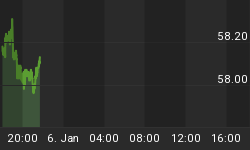In addition to bubble-busting events in real estate and the Chinese stock market, China now has to deal a plunge in exports.
Following Saturday's report Chinese Exports Slump Over Eight Percent, analysts expect more China stimulus.
Chinese exports tumbled 8.3 percent in July, their biggest drop in four months and far worse than expected, reinforcing expectations that Beijing will be forced to roll out more stimulus to support the world's second-largest economy.
Imports also fell heavily from a year earlier, in line with market forecasts but suggesting domestic demand might be too feeble to offset the weaker global demand for China's exports.
Exports to the European Union fell 12.3 percent in July while those to the United States dropped 1.3 percent. Demand from Japan, another big trading partner, slid 13 percent.
"A recovery in external demand remains far off and economic growth will continue to rely on domestic demand, which implies policies should continue to be relaxed in the second half," wrote Qu Hongbin, China economist at global bank HSBC.
China recorded a trade surplus of $43.03 billion for the month, below forecasts of $53.25 billion.
Economists also blame a strong yuan for the export weakness, with ANZ Research estimating the currency's nominal effective exchange rate has risen by 13.5 percent since June 2014.
Analysts say Beijing has been keeping its yuan strong to wean its economy off low-end export manufacturing. A strong yuan policy also supports domestic buying power, helps Chinese firms to borrow and invest abroad, and encourages foreign firms and governments to increase their use of the currency.
"These factors suggest that China's exports will continue to face strong headwinds," Liu Ligang and Louis Lam said in an ANZ Research note on Saturday, adding that they doubted Beijing would hit its trade growth target of 6 percent for this year.
Cries for More Stimulus
Excessive stimulus created property bubbles and an enormous stock market bubble.
The average stock speculator has not even graduated from high school. The Washington Post reports:
"Before peaking on June 12, China's stock market had risen by about 150 percent in a year, completely divorcing itself from increasingly worrying economic and corporate fundamentals. Frenzy gripped the nation; from high school students to farmers, ordinary Chinese citizens pooled ideas to take advantage of what looked like easy money. Thousands of people gathered in "street stock market saloons" in Shanghai from early afternoon until late in the evening to swap tips."
Yet analysts want and expect more stimulus. The cry "do something" is overpowering even though huge problems were created precisely by "doing something," typically stimulus to meet absurd growth targets.
Mish Action Item Proposal
No one in their right mind believes Chinese growth is as high as China proclaims. And if China wants to do something that truly makes sense, I offer this simple proposal: abolish growth targets completely.
Then, no analysts could make inane comments about needing more stimulus to meet targets, because there would be no inane targets to hit.
Spotlight on US Trade Imbalance With China
On May 5, Fortune reported U.S. trade deficit with China reaches all-time high.
Just as the debate over free trade deals heats up in Washington, free trade advocates were hit with the ill-timed news that the trade deficit surged to $51.4 billion in March, up sharply from $35.9 billion in February.
The rise was due mostly to an increase in imports, which skyrocketed by 7.7%, while exports increased just 0.9%. The U.S. trade deficit with China was $37.8 billion, or 74% of the total and the highest ever monthly deficit with that country on record. The overall monthly deficit was the highest since 2008, while the increase from February to March represented the largest monthly leap since 1999.
Current US Trade Numbers
The above report was based on March trade, no doubt affected by the end of the West coast port strike.
So let's hone in on the BEA Balance of Trade Report released August 5, for the month of June.
The U.S. Census Bureau and the U.S. Bureau of Economic Analysis, through the Department of Commerce, announced today that the goods and services deficit was $43.8 billion in June, up $2.9 billion from $40.9 billion in May, revised. June exports were $188.6 billion, $0.1 billion less than May exports. June imports were $232.4 billion, $2.8 billion more than May imports.
The June figures show surpluses, in billions of dollars, with South and Central America ($3.5), OPEC ($0.7), and Brazil ($0.6). Deficits were recorded, in billions of dollars, with China ($29.0), European Union ($13.9), Germany ($6.8), Mexico ($5.4), Japan ($5.2), Canada ($3.1), South Korea ($2.3), Italy ($2.2), France ($1.7), India ($1.6), Saudi Arabia ($0.5), and United Kingdom ($0.2).
The balance with Canada shifted from a surplus of $0.2 billion in May to a deficit of $3.1 billion in June. Exports decreased $1.1 billion to $23.0 billion and imports increased $2.2 billion to $26.2 billion.
The deficit with Mexico increased $1.3 billion to $5.4 billion in June. Exports increased $0.1 billion to $20.0 billion and imports increased $1.4 billion to $25.5 billion.
Comparison
For July, China recorded a $43 billion trade surplus with the world. The latest numbers from the US are for June, but let's assume they will not change much.
Of China's $43 billion surplus, $29 billion of it is from the US, the other $14 billion with the rest of the world.
Analysts claim the "Yuan exchange rate has risen by 13.5 percent since June 2014".
And on May 26, the IMF made this statement "Appreciation over the past year has brought the exchange rate to a level that is no longer undervalued."
Yet, the US deficit with China persists, as do cries of Yuan manipulation in Congress.
















